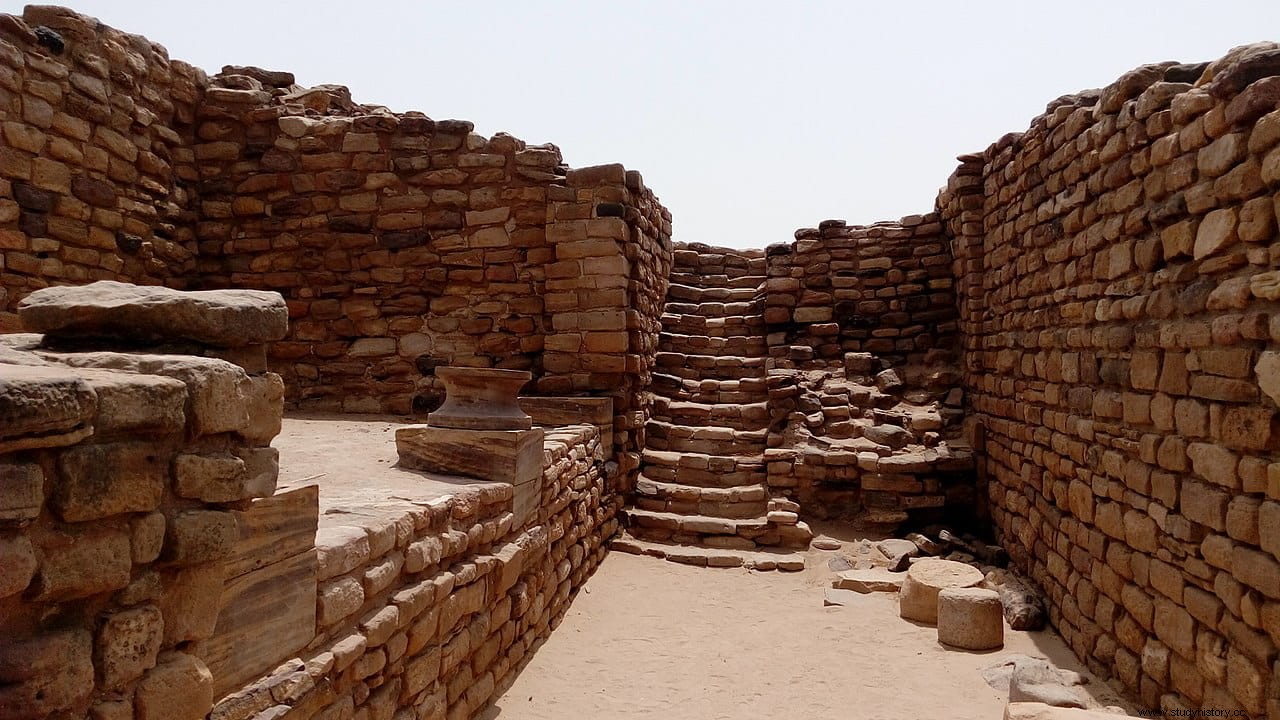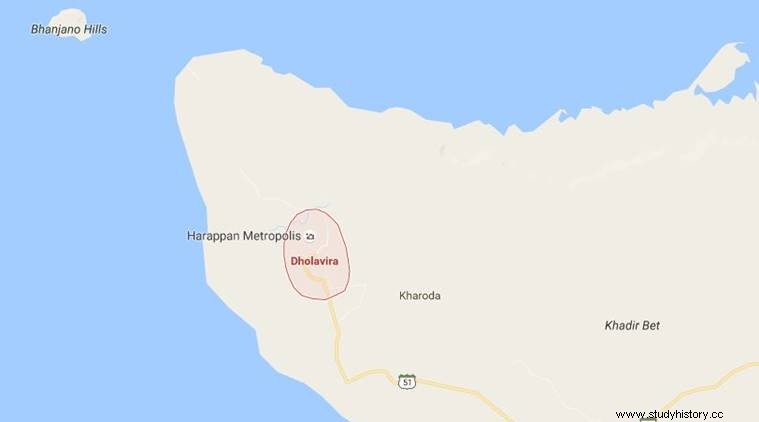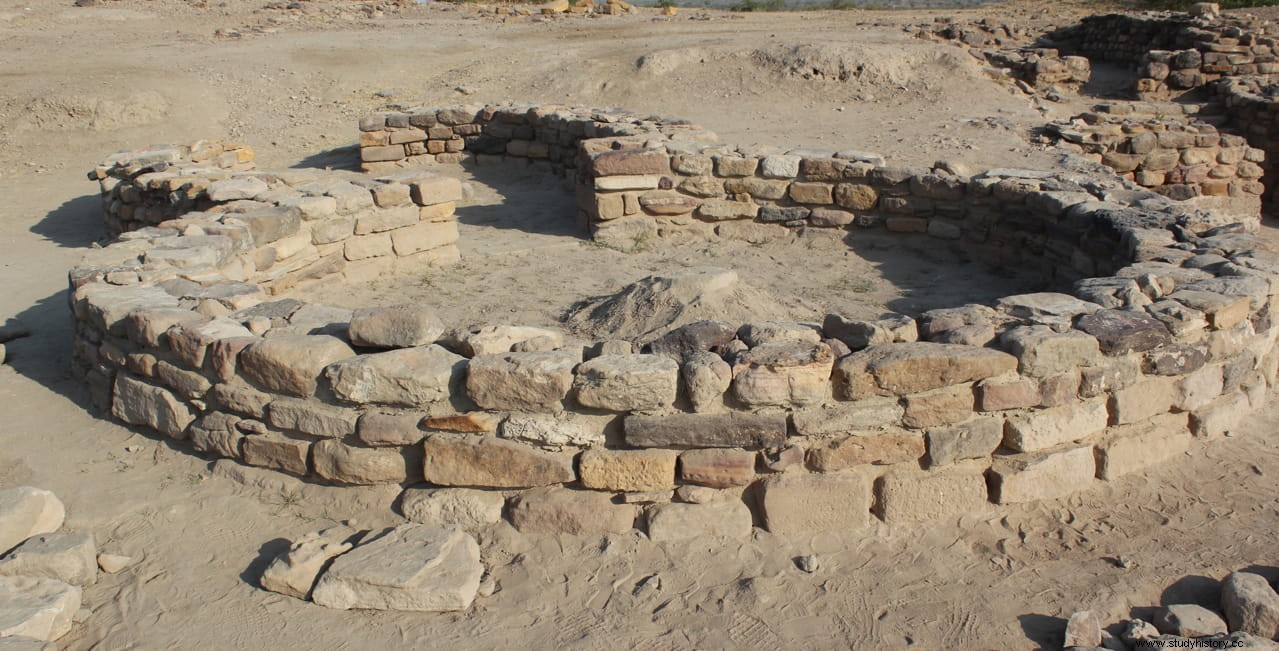Dholavira It is an archaeological site located in the state of Gujarat, in northwestern India. There, archaeologists have been excavating since 1990 an ancient city that is among the five largest found belonging to the Indus Valley culture. It is also considered the largest port city of its time. It is located in the Rann of Kutch , a clayey desert that seasonally turns into a brackish marsh. Dholavira is flanked by two rivers that, during the monsoon season, completely surround the place, turning it into an island called Khadir bet .
Now researchers have found evidence that the city was destroyed by a tsunami 3,450 years ago , making it the oldest known urban settlement in the world to experience such a disaster.

Dholavira, which has a quadrangular plan covering some 47 hectares, is known to have been inhabited around 2650 BC. Little by little it fell into decline until it was abandoned around 2100 BC, but it was occupied again around 1450 BC
Discovered in 1967 by J. P. Joshi, it would not be until the 1990s that excavations would begin, placing it as one of the most important settlements of the Indus Valley culture, along with Harappa, Mohenjo-Daro, Ganeriwala, Rakhigarhi, Kalibangan, Rupnagar and Lothal. What sets them apart is that their construction followed a predetermined geometric plan , with an acropolis fortified by double walls, and that all its buildings were built with stone , instead of the bricks used in Harappa or Mohenjo-Daro.

Another of its peculiarities is that it had an advanced hydraulic system of channels and tanks to store water from rain and rivers (dams have also been found at different points), the oldest found in the world , also built entirely of stone. Archaeologists have already uncovered more than 16 of these deposits, which are about 7 meters deep and 89 meters long, on average. In 2014, a rectangular well 73 meters long by 29 meters wide and 10 meters deep was discovered, three times larger than the famous Great Bath of Mohenjo-Daro.
Among the constructions discovered at the site there are seven circular structures , whose function is not exactly known, but according to the researchers have similarities with the first Buddhist stupas. Ceramic pieces, sculptures, bronze objects such as mirrors and hammers, phallic symbols, inscribed seals and gold jewelry were also found.

The most significant discovery of Dholavira is a kind of sign or sign, which originally consisted of a wooden board on which pieces of plaster were arranged to form ten large symbols or letters . The wood was lost but the letters remained in place. Each one is 37 centimeters high, and the table is estimated to have been about 3 meters long. It is one of the largest inscriptions in the Indus script. This, together with the fact that it was a public signal, evidence according to the experts the complete literacy of that culture.

Researchers from the National Institute of Oceanography of India believe that the walls between 14 and 18 meters wide that surround the southern part of the city, had to be built to protect themselves from tsunamis, which would have been frequent in the area. Walls of that width are not found even in later times, when the destructive capacity of weapons was progressively increasing.
Analysis of the sedimentary deposits at the site found fossils of foraminifera, microscopic shell-like marine organisms, suggesting that these deposits may be the result of a massive tsunami.
